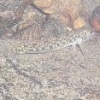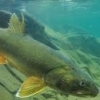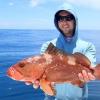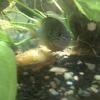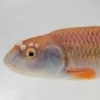I'm wondering what you guys all think about the impact of Commons on our waterways. I'm an avid carp fisherman and support the Carp Angler's Group, and think that commons are non-detrimental. With the big asian carp boom, there have been a lot of bow fishing guys that are just cleaning out a lot of systems of commons, thinking that anything that's exotic is undesirable altogether. I personally am against that, I think they're great sport fish. What do you guys think?
What are your thoughts on Common Carp in America?
#1

Posted 30 June 2015 - 10:24 PM
120 low tech native planted - Blackstriped Topminnow, Central Stoneroller, Fathead minnow, Golden Shiner, Black chin shiner, Carmine Shiner, Emerald Shiner, Sand Shiner, Spotfin Shiner, Orangethroat darter, Johnny Darter, and Banded Darter.
#2

Posted 30 June 2015 - 10:57 PM
#3

Posted 30 June 2015 - 11:01 PM
At this point they are not a huge deal in my opinion, mostly because we cannot eradicate them. Others with more data, may tell you a very different story. I am sure the cause some impact from adding silt to the water while feeding, and clogging up native fish nests. Of course they also compete for food to some degree and I think they also strip nests of eggs.
They are the lesser of all the carp evils. Should they be here? No. They are, and are here to stay, so make use of them. Take steps to preserve them, no, shoot them like any other carp. I would like to see bowfisherman stick with carp, and stay off of suckers and gar. But surely they are not as bad as Asian carp.
I think the thing is here, that most of us view them as invasive, and non-native even though they have been here for quite some time. So most NANFA members have no love for them. I only speak for myself, but if I could hit the refresh button and have no common carp in the US I would have hit it yesterday.
All that being said, I have fished for them on occasion. They do fight quite well, and since they are here to stay, I may go carp fishing again sooner or later. But I wish that our ancestors had left them and brown trout back in the countries that they belong in. God- Mother nature, whatever you are in to had it right in the first place. Man tends to screw it up.
How often do you see a gray fox nowadays? Not often as the red fox that our forefathers brought over because they were more sporting have out competed them.
Enough of my rant, and I cannot give you data that says that common carp are bad for our ecosystems. But, I bet someone else will be able to give you some..
The member formerly known as Skipjack
#4

Posted 30 June 2015 - 11:44 PM
They are here to stay. I would be surprised if population structure not already reflecting localized adaptions. Birds of similar origins already showing such.
#5

Posted 30 June 2015 - 11:48 PM
#6

Posted 01 July 2015 - 07:41 AM
#7

Posted 01 July 2015 - 08:14 AM
I never caught a carp while fishing (I want to, but they avoid my bait) but I agree they do not belong here.
I looked up the damage they do, and it seems some lakes in the midwest experienced declines in gamefish, panfish, and vegetation that creates a habitat for fish and waterfowl.
Oddly enough they are one of the few fish I haven't read up on being destructive in New England. (though I wouldn't be surprised if they are). I guess when your ecosystem is already trashed for hydro power and game fish you reach a point where it is tough to do worse with it, ![]()
But as I said they have been destructive in places and do not belong in our waters, but it is too late to remove them.
Carp: as a noun it is a fish, a verb it is complaining, on the NANFA facebook it has been both at once. ![]()
Edited by FirstChAoS, 01 July 2015 - 08:21 AM.
#8

Posted 01 July 2015 - 08:50 AM
#9

Posted 01 July 2015 - 09:16 AM
Strat guy, since you're in Illinois, you should take a day trip down to Hennepin-Hopper Lake near the town of Hennepin. They drained it completely a few years ago, rotenoned the remaining ditches and puddles to kill the common carp, and then let it fill back up. It took two iterations to finally get rid of every last one. They introduced native aquatic plants, which are now flourishing. The water is unbelievably clear. Currently no fishing is allowed while they wait for the game fish species to develop several year classes. It's stocked with the usual game species, but also has IL strain redspotted sunfish, alligator gar, bowfin, starhead topminnows, and maybe a few other interesting species.
I'm really excited about Hennepin-Hopper. If it turns out to be a long term success, then I think we should consider taking similar actions where it makes sense.
However, most waterways will always have common carp, no matter what we attempt to do. They'll be here long after we're extinct. When I catch carp in spots like that, I feel completely guilt free when I release them. In fact, I feel the same way about silver and bighead carp in spots where there are thousands of them stacked up.
The weekend warrior attitude we see online and when we're out fishing is pretty troubling. More often than not, the people who believe in killing every carp they encounter also believe they should kill every sucker, redhorse, buffalo, quillback, bowfin, freshwater drum, and gar. I really wish the DNR would not encourage people to kill carp. That sort of work should be left up to professionals.
Pound for pound, nothing fights as hard as common carp. They are a blast to catch. ![]()
#10

Posted 01 July 2015 - 10:52 AM
They are so generally accepted that I thought they were native until I was 7 or 8 years old and started to look it up.
#11

Posted 02 July 2015 - 09:07 AM
Like most of the responses I agree that not a ton can be done about them in most places but I wish we had never brought them here in the first place. They certainly do damage but there are examples where if the habitat is improved to favor natives they actually decline as the native fish community recovers. A great example is the Scioto River just south of Columbus Ohio. This stretch of river is probably the most sampled river reach in Ohio. Ohio EPA started their regular fish sampling in the late 1970's. I have talked with crew leaders who talk about being able to sink an electrofishing boat with all the carp caught on the Scioto back in their early days. As efforts and regulations have gone into effect to improve water quality coming out of Columbus over the years common carp numbers have dropped dramatically while numbers of native redhorse have increased dramatically. It seems in a healthy river system redhorse and buffalo out compete common carp. Only when the water quality is bad or the habitat bad do the carp gain an advantage. Today there are of course still carp in the Scioto River but there are actually far more redhorse and buffalo and the common carp is a relatively small component of the fish community in the free flowing portion of the Scioto River south of Columbus Ohio.
Where I feel they are the biggest problem today is small isolated systems. The best first hand example I can use is Ohio's natural lakes. We do not have the big and abundant lakes of MI, MN, northeast IN, or WI. We have about 50 small (many under 10 acres) natural lakes in Ohio. I spent 2 years surveying these systems for non-game species that are native to these systems in Ohio. The two main species we looked for were Lake Chubsuckers (state threatened) and Iowa Darters (state endangered). It seems these two species could handle poor habitat in the absence of carp or the presence of carp in still good habitat. There was one very small natural lake (I would guess 3-4 acres) that is in a cow pasture and the county road that is otherwise straight takes a curve to go around the edge. So shoreline habitat is shot. I first visited this with Matt DeLaVega in 2009. This little lake despite the terrible habitat had hundreds of Iowa darters and least darters easily caught from shore with a dipnet while standing on the county road. At the time there appeared to be no common carp. I returned to this lake in 2011 as part of my 2 year survey of Ohio natural lakes. There were now carp, water visibly more turbid, and we found 2 Iowa darters and no least darters. The landowner did not put the carp there and was quite upset about them actually. It seems the carp were just the final straw that pushed the population of Iowa and least darters over the edge to a crash. This was one of just 12 lakes that I found any Iowa darters in at all in Ohio. This is over a 50% reduction since 1982 when 26 localities were known. Several of the places we found some at 2011-2012 we found just 1 or 2. I think we are down to 6-7 viable populations in Ohio and many of the lost populations may be the result of common carp being recently introduced on top of already poor habitat conditions. There were a couple of small lakes that still had pretty good shoreline habitat and abundant natural aquatic vegetation that did have common carp and still had Iowa darters. It seemed it was the combination of poor habitat and common carp that spelled the end for these small natural lake populations of Iowa darters or lake chubsuckers.
So in summary common carp are still causing problems and there are still some small natural bodies of water that do not have them but they are becoming fewer and fewer thanks to ignorant uneducated people who want to fish for them. It seems in large systems they are best dealt with by restoring habitat and improving water quality to allow the native ecosystem to out compete them and in small isolated systems just don't put them there!
Brian J. Zimmerman
Gambier, Ohio - Kokosing River Drainage
#12

Posted 02 July 2015 - 09:30 AM
I'm curious as to why common carp are reputed to create turbidity and "clog up native fish nests" (as Matt says) any more than our native substrate-sifting fishes? Carp do not create silt - they just resuspend whatever silt has already settled. Yes, they poop, but so do all fish. Being plant spawners rather than gravel spawners, I imagine carp can survive in more heavily silted habitats where native gravel-spawning substrate-feeders are declining due to the silt. How much of their bad reputation is due to damage that carp actually cause versus other habitat damage (erosion and nutrient enrichment) that just happens to benefit carp over native suckers, chubs, etc.
Gerald Pottern
-----------------------
Hangin' on the Neuse
"Taxonomy is the diaper used to organize the mess of evolution into discrete packages" - M.Sandel
#13

Posted 02 July 2015 - 10:26 AM
I agree with Brian. For rivers, focus on restoring the habitat, but don't waste effort trying to eliminate the carp. For isolated lakes, if you can eliminate the carp completely, then absolutely do so. It has to be an all or none attempt though.
#14

Posted 02 July 2015 - 11:47 AM
Like most of the responses I agree that not a ton can be done about them in most places but I wish we had never brought them here in the first place. They certainly do damage but there are examples where if the habitat is improved to favor natives they actually decline as the native fish community recovers. A great example is the Scioto River just south of Columbus Ohio. This stretch of river is probably the most sampled river reach in Ohio. Ohio EPA started their regular fish sampling in the late 1970's. I have talked with crew leaders who talk about being able to sink an electrofishing boat with all the carp caught on the Scioto back in their early days. As efforts and regulations have gone into effect to improve water quality coming out of Columbus over the years common carp numbers have dropped dramatically while numbers of native redhorse have increased dramatically. It seems in a healthy river system redhorse and buffalo out compete common carp. Only when the water quality is bad or the habitat bad do the carp gain an advantage. Today there are of course still carp in the Scioto River but there are actually far more redhorse and buffalo and the common carp is a relatively small component of the fish community in the free flowing portion of the Scioto River south of Columbus Ohio.
Where I feel they are the biggest problem today is small isolated systems. The best first hand example I can use is Ohio's natural lakes. We do not have the big and abundant lakes of MI, MN, northeast IN, or WI. We have about 50 small (many under 10 acres) natural lakes in Ohio. I spent 2 years surveying these systems for non-game species that are native to these systems in Ohio. The two main species we looked for were Lake Chubsuckers (state threatened) and Iowa Darters (state endangered). It seems these two species could handle poor habitat in the absence of carp or the presence of carp in still good habitat. There was one very small natural lake (I would guess 3-4 acres) that is in a cow pasture and the county road that is otherwise straight takes a curve to go around the edge. So shoreline habitat is shot. I first visited this with Matt DeLaVega in 2009. This little lake despite the terrible habitat had hundreds of Iowa darters and least darters easily caught from shore with a dipnet while standing on the county road. At the time there appeared to be no common carp. I returned to this lake in 2011 as part of my 2 year survey of Ohio natural lakes. There were now carp, water visibly more turbid, and we found 2 Iowa darters and no least darters. The landowner did not put the carp there and was quite upset about them actually. It seems the carp were just the final straw that pushed the population of Iowa and least darters over the edge to a crash. This was one of just 12 lakes that I found any Iowa darters in at all in Ohio. This is over a 50% reduction since 1982 when 26 localities were known. Several of the places we found some at 2011-2012 we found just 1 or 2. I think we are down to 6-7 viable populations in Ohio and many of the lost populations may be the result of common carp being recently introduced on top of already poor habitat conditions. There were a couple of small lakes that still had pretty good shoreline habitat and abundant natural aquatic vegetation that did have common carp and still had Iowa darters. It seemed it was the combination of poor habitat and common carp that spelled the end for these small natural lake populations of Iowa darters or lake chubsuckers.
So in summary common carp are still causing problems and there are still some small natural bodies of water that do not have them but they are becoming fewer and fewer thanks to ignorant uneducated people who want to fish for them. It seems in large systems they are best dealt with by restoring habitat and improving water quality to allow the native ecosystem to out compete them and in small isolated systems just don't put them there!
Thank you Brian... I love this post... I wanted to jump in and mention the habitat... and question what is cause and what is effect... but was not sure how to do it... you gave great examples and a clear explanation.
#15

Posted 02 July 2015 - 02:17 PM
Thanks Michael glad you like it!
I hope to revisit the small lake I described in the future and if I can find a way maybe even work with the land owner to eliminate the carp and or all the fish and just start over as far as the fish population goes. Right now it is just a dream but in that sort of situation it is possible with some funding, proper supplies, and a willing land owner.
Brian J. Zimmerman
Gambier, Ohio - Kokosing River Drainage
#16

Posted 02 July 2015 - 03:41 PM
Thank you Brian... I love this post... I wanted to jump in and mention the habitat... and question what is cause and what is effect... but was not sure how to do it... you gave great examples and a clear explanation.
I agree. It's interesting to hear your first-hand experience, Brian. I hope you do get to help restore that lake someday. It sounds feasible and worthwhile.
#17

Posted 03 July 2015 - 08:01 AM
carp are highly respected in asia and europe, but here all bottom feeders seem to be disrespected native or otherwise, they can be a great food source, and have a rep of fighting like a freight train. they have been here a long time,aren't going away, we should find ways to utilize them, anyone out there eat common carp? they can be invasive and detrimental in some areas. i hate all poisonings, and mass murder contests, unless associated with a giant fish fry, need to find better ways to control them when they become a problem,
#18

Posted 03 July 2015 - 08:25 AM
Yeah, I eat common carp every now and then. It's pretty satisfying removing them from the river when they're spawning alongside native sucker species.
male - you can see some love sauce on his anal fin
female - loaded up with eggs
chilling in the sink while I prep for cleaning them
fillet cooked in a wok with lots of soy sauce and ginger (have to deal with all the little bones as you eat it)
common carp as the main course
ready to be cleaned
removing the "mud vein" from the fillet (removing this strip of dark meat gets rid of some of the bad flavors associated with carp)
common carp vacuum sealed and frozen for future meals
common carp pickled, eaten as a snack
#19

Posted 03 July 2015 - 09:47 AM
I like Brian's post as well. I would love to not have them, along with starlings, in our environment. I like the idea that improving habitats is a good way to minimize the impact of an invasive species. Here in the Upper Peninsula, where habitats in general are in better shape, I see carp but not in the aggregations I used to see downstate. I have a wetland across the river from my yard. Just a couple of days ago the carp were in spawning. By my best eyeball estimate, there were about a dozen fish. We have more bowfin spawning in that area. Yesterday on Bay de Noc, I saw several carp while smallmouth fishing, but nothing compared to the number of smallmouth I saw.
My point is, they are there, but not overwhelming the ecosystem. In isolated systems, we should remove them. But on the whole, we should work on improved habitats for our native species.
#20

Posted 03 July 2015 - 12:32 PM
1 user(s) are reading this topic
0 members, 1 guests, 0 anonymous users


 This topic is locked
This topic is locked
